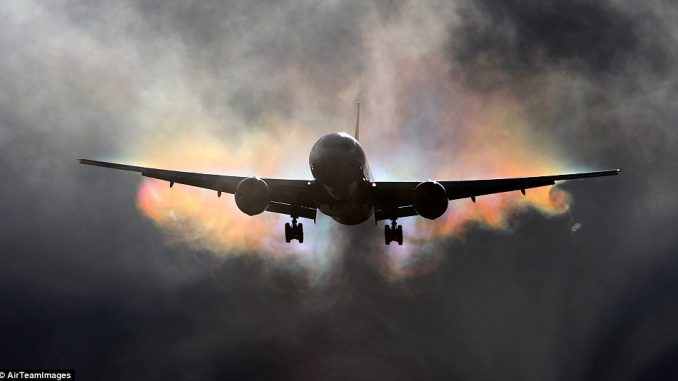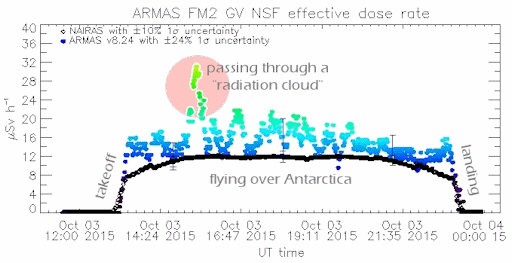
A new peer-reviewed study has found evidence of “radiation clouds” at altitudes that commercial airplanes fly, which scientists say pose a risk to passengers.
According to the study published in journal Space Weather, when aircraft fly through these clouds, cosmic radiation doses more than double and are absorbed by passengers.

BYPASS THE CENSORS
Sign up to get unfiltered news delivered straight to your inbox.
You can unsubscribe any time. By subscribing you agree to our Terms of Use
Latest Video
Spaceweather.com reports:
“We have flown radiation sensors onboard 264 research flights at altitudes as high as 17.3 km (56,700 ft) from 2013 to 2017,” says Kent Tobiska, lead author of the paper and PI of the NASA-supported program Automated Radiation Measurements for Aerospace Safety (ARMAS). “On at least six occasions, our sensors have recorded surges in ionizing radiation that we interpret as analogous to localized clouds.”
The fact that air travelers absorb radiation is not news. Researchers have long known that cosmic rays crashing into Earth’s atmosphere create a spray of secondary particles such as neutrons, protons, electrons, X-rays and gamma-rays that penetrate aircraft. 100,000 mile frequent flyers absorb as much radiation as 20 chest X-rays—and even a single flight across the USA can expose a traveler to more radiation than a dental X-ray.
Conventional wisdom says that dose rates should vary smoothly with latitude and longitude and the height of the aircraft. Any changes as a plane navigates airspace should be gradual. Tobiska and colleagues have found something quite different, however: Sometimes dose rates skyrocket for no apparent reason.
“We were quite surprised to see this,” says Tobiska.
All of the surges they observed occurred at relatively high latitudes, well above 50 degrees in both hemispheres. One example offered in their paper is typical: On Oct 3, 2015, an NSF/NCAR research aircraft took off from southern Chile and flew south to measure the thickness of the Antarctic ice shelf. Onboard, the ARMAS flight module recorded a 2x increase in ionizing radiation for about 30 minutes while the plane flew 11 km (36,000 feet) over the Antarctic Peninsula. No solar storm was in progress. The plane did not abruptly change direction or altitude. Nevertheless, the ambient radiation environment changed sharply. Similar episodes have occurred off the coast of Washington state.

Above: Radiation measurements made by ARMAS while flying over Antarctica. The colored points are from ARMAS. The black points are from a NASA computer model (NAIRAS) predicting radiation dose rates. Throughout the flight, ARMAS observed higher dose rates than predicted by the model, including a surge highlighted in pink.
What’s going on?
“We’re not sure,” says Tobiska, “but we have an idea.”
Earth’s magnetic field, he explains, traps many cosmic rays and solar energetic particles in structures called “magnetic bottles.” These bottles can be leaky. Even minor gusts of solar wind can cause the trapped particles to squirt out the ends of the bottle, sending beams of particles down toward the Earth below.
“Basically, we think we might be flying through some of these leaky particle beams,” says Tobiska.
Tobiska notes that a team of South Korean researchers has observed similar variations in radiation while flying sensors onboard a military aircraft near the border between the two Koreas (Lee et al 2015). If the phenomena are the same, the Korean measurements would suggest that “radiation clouds” may exist at middle latitudes, too.
The ARMAS program has a busy flight schedule in 2017. “We’ll be looking carefully for more ‘clouds’ as we continue to characterize the radiation environment at aviation altitudes,” says Tobiska.


